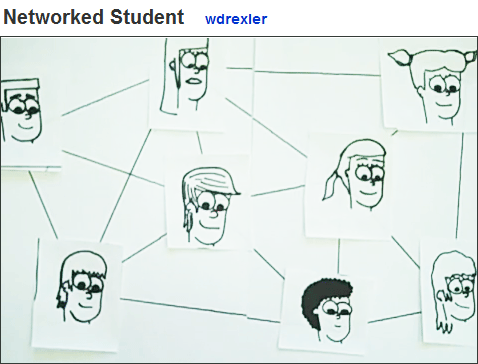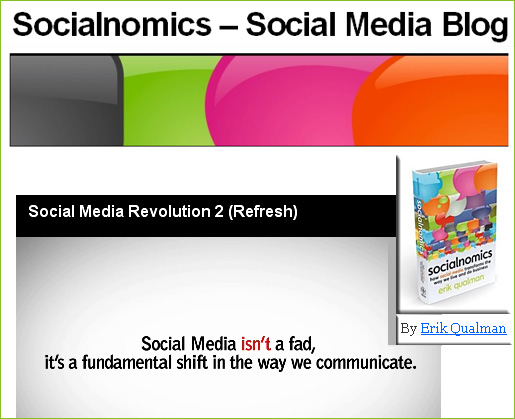A World to Change — Stephen Downes at the Huffington Post
The Wild World of Massively Open Online Courses — from unlimitedmagazine.com by Emily Senger
Would you participate in a class with 2300 other online students?
In a traditional university setting, a student pays to register for a course. The student shows up. A professor hands out an outline, assigns readings, stands at the front and lectures. Students take notes and ask questions. Then there is a test or an essay.
But with advancing online tools innovative educators are examining new ways to break out of this one-to-many model of education, through a concept called massively open online courses. The idea is to use open-source learning tools to make courses transparent and open to all, harnessing the knowledge of anyone who is interested in a topic.
George Siemens, along with colleague Stephen Downes, tried out the open course concept in fall 2008 through the University of Manitoba in a course called Connectivism and Connective Knowledge, or CCK08 for short. The course would allow 25 students to register, pay and receive credit for the course. All of the course content, including discussion boards, course readings, podcasts and any other teaching materials, was open to anyone who had an internet connection and created a user profile.
“The course was the platform, but anyone could build on that platform however they wanted,” says Siemens. “There’s this notion that technology is networked and social. It does alter the power relationship between the educator and the learner, a learner has more autonomy, they have more control. The expectation that you wait on the teacher to create everything for you and to tell you what to do is false.”
The Broken Accreditation System — Quote below from Stephen Downes
Links to an article by Ben Miller at The Quick and the Ed — dated August 6, 2010
Per Downes:
I have long said the accreditation monopoly will be ended, and though this looks like an attack on the for-profits, it is actually the first brick through the window of the accreditation system. Not that the for-profits are blameless – far from it. They have gamed the system mightily. “The first two hours of the hearing were devoted to damning undercover video of admissions counselors encouraging prospective students to lie on aid applications; inflating career earnings potential; and admitting they weren’t going to repay $85,000 of their own loan debt.” But as nothing will change the nature of the private sector, the only locus of reform will have to be the accreditation system itself. Thus we read, “there are some fundamental problems about accrediting agencies and the accrediting system that hurt its ability to provide the oversight and accountability functions we desire.” This will end only with the end of legislated accreditation, and though the government money may be harder to obtain (as, inevitably, it will be) the floodgates will be opened. It can end no other way.
From DSC:
This is yet another part of the “perfect storm” that’s brewing in higher education.
Also see:
http://www.quickanded.com/2010/08/the-broken-accreditation-system.html
16 resources about Personal Learning Networks (PLNs) — from Shelly Terrell
Research about PLNs
Below are 16 resources I have collected about the history of PLNs, how to build a PLN, and the tools needed to build a PLN. Please scroll down and take a look at these resources and see if they can be an addition to a future presentation.
We Connect Wiki– This wiki is full of videos, Wallwishers, Wikipedia articles, and more that help educators find the resources to build a PLN. You will find all the materials listed in this post there as well as at least 50 other links to video tutorials, step-by-step guides, lists of people to follow, and more to help any educator new or old to this concept build a PLN.
Wikipedia article about PLNs– This article explains the history and theory behind PLNs. Do you know where the term developed, the theory behind PLNs, who are the forerunners of the PLN movement?
Connectivism: A Learning Theory for the Digital Age by George Siemens– Siemens is noted as one of the forerunners behind the PLN movement. In this article, Siemens discusses the theory behind PLNs. This is one of the most important articles behind the PLN movement.
Origins of the Term ‘Personal Learning Network’ by Stephen Downes– Downes is another forerunner of the PLN movement and connectivism. In this post, he delineates the origins of the term.
The Art & Technique of Personal Learning Networks by David Warlick– Warlick defines PLN in easily understood terms, explains how the process works, and provides several articles for more information.
PLN posts on Teacher Reboot Camp– Read several of my posts about PLNs and the type of learning they provide. You will also find posts like, PLNs, Where Do We Begin?, to help you relate the concept to educators who have never experienced this before.
Thinking out loud about Connectivism — from iterating toward openness by David Wiley
The first part of commentary from David:
I’ve been reading George’s writing on the unique ideas in connectivism. Two assertions leap out at me in his list of how connectivism is different from other approaches.
First is the statement that “the same structure of learning that creates neural connections can be found in how we link ideas and in how we connect to people and information sources (emphasis DSC). One scepter to rule them all.”
This sounds almost exactly like the claim made in John Anderson and Lael Schooler’s 1991 Reflections of the Environment in Memory, which I consider one of the finest pieces of research in our field:
Availability of human memories for specific items shows reliable relationships to frequency, recency, and pattern of prior exposures to the item. These relationships have defied a systematic theoretical treatment. A number of environmental sources (New York Times, parental speech, electronic mail) are examined to show that the probability that a memory will be needed also shows reliable relationships to frequency, recency, and pattern of prior exposures. Moreover, the environmental relationships are the same as the memory relationships. It is argued that human memory has the form it does because it is adapted to these environmental relationships. Models for both the environment and human memory are described. Among the memory phenomena addressed are the practice function, the retention function, the effect of spacing of practice, and the relationship between degree of practice and retention.
From DSC:
David’s posting, George’s posting entitled, “What is the unique idea in Connectivism?”, and the comments therein create in my mind the image of a living, ever-changing, learning ecosystem…full of “nodes” that come into (and may eventually be removed from) our learning environment / sources of information.
Also from #CCK09 First Paper (Draft): ‘Positioning’ Connectivism, here are some more references regarding connectivism:
- Stephen Downes, A quick introduction to connectivism(ustream)
- Rita Kop & Adrian Hill, Connectivism: Learning theory of the future or vestige of the past?
- Marshall McLuhan, Understanding Media, 1964 (2006)
- George Siemens, Connectivism: A Learning Theory for the Digital Age
- George Siemens, Defining Connectivism and Comparing connectivism with other learning theories
- George Siemens, What is the unique idea in Connectivism?
- Plon Verhagen, Connectivism: A New Learning Theory?
Three Generations of Distance Education Pedagogy
Facilitator: Dr. Terry Anderson
Institution: Athabasca University
Date and time: Apr 14, 2010 11:00 AM
In this presentation Terry defines three pedagogical models that have defined distance education programming – behavioural/cognitive, constructivist and connectivist. He talks about the challenges and opportunity afforded by each model, with a focus on the emergent development of connectivism.










